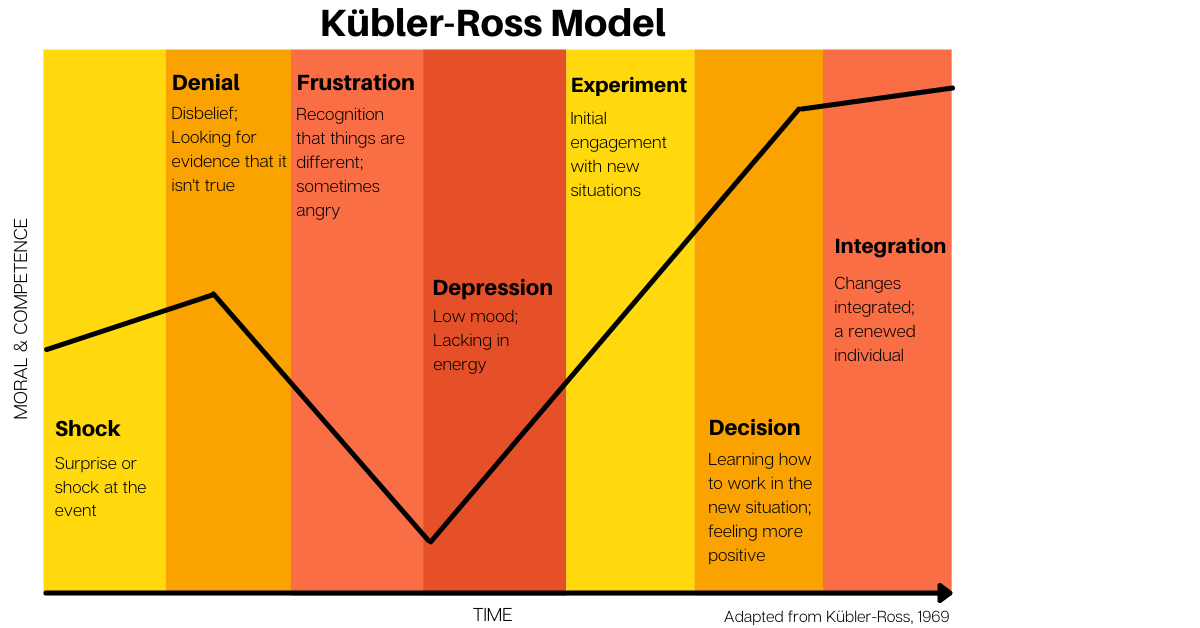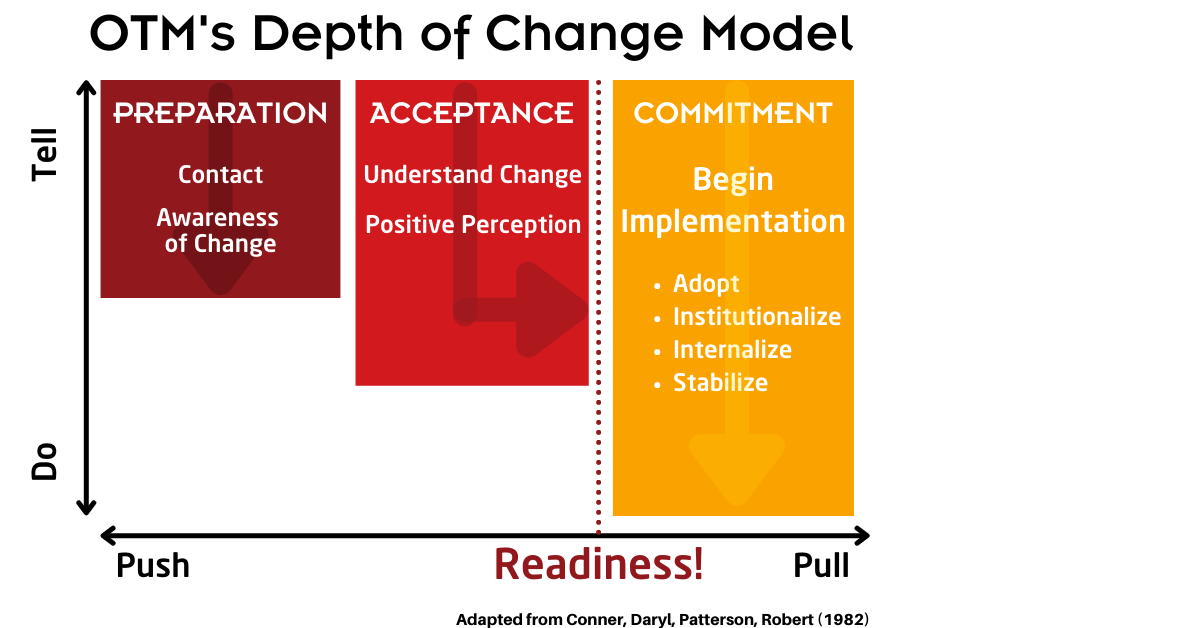5 minute read
Takeaway: Poor stakeholder management is one of the major three reasons for failure to implement change. Using proactive and targeted stakeholder management strategies, coupled with necessary levels of engagement will greatly increase chances for success.
Stakeholder Engagement
Many organisations practice a traditional change management approach to change with top-down communications (often one-way, or -at best- with rudimentary feedback and dialogue). The expectation is that change will result in resistance and opposition. The result is the adoption of the Kubler-Ross change curve as a model for managing change:

Given that the original work was based on how people cope with emotional loss outside their control, such as death, it is an appropriate – if somewhat macabre framework to adopt to guide change!
Another problem with traditional change management approaches is what we call the ‘Buy-in’ fallacy. We hear a lot of organisations and practitioners talk about ‘buy-in’ around change efforts. In other words, they are going to tell stakeholders about the change and expect (or hope) they go along with it. The real choice is between working towards compliance or commitment to the change. Compliance means that change is going to happen, and stakeholders simply have to find a way to live with it. Commitment means that you are going to work with stakeholders to win over both head and heart – by developing understanding and then support for the change. Taking a commitment-based approach is what we call a ‘pay now’ stakeholder strategy plan because it involves investing more resources, time and effort up front to develop understanding, support and ownership of the change effort – what we call ‘head and heart’ support.
A useful framework to utilise when thinking about how to build commitment is the Beckhard & Harris change formula.

The idea is to ensure that there is:
- Sufficient dissatisfaction with the current state, answering why we need to change;
- A compelling future vision, answering why it will be worth changing; and
- First steps towards the future state, showing how we will begin to get there.
All three elements need to be in place, well-articulated and understood in order to overcome reluctance to change.
We have also adapted the commitment curve (Conner, Daryl, Patterson, Robert) to think about how deep to drive organisational change. This guides the interventions and tactics of stakeholder engagement in a programmatic way, so that each phase and activity builds on preceding ones.

Stakeholder Management Programme
Stakeholder engagement activity should be managed as a coordinated and coherent programme of activity. There will be opportunities to leverage activities across different stakeholders and it is critical to monitor the different stakeholders’ feedback, attitude, concerns, and level of commitment. Using the frameworks discussed above, The stakeholder management team has a common yardstick to discuss the level of commitment as well as identify appropriate interventions.
Each stakeholder should have a respective ‘owner’, who is responsible for managing and coordinating the engagement activity and monitoring the stakeholder/group response. The first job for the stakeholder manager is to understand the delta between the level of support needed (from the stakeholder analysis step) and the current level of support. Once this is established, then targeted actions can be developed to close the gap. After identifying these actions, it is important to pull together an overview of the plans to identify opportunities to leverage and coordinate activities across multiple stakeholder groups. This creates both economy of effort and momentum for change in the organisation.
Finally, the stakeholder managers should be regularly reviewing progress against the plan, feedback, risks, and issues so that appropriate mitigation can be implemented. In this way, stakeholder management becomes dynamic and responsive as well as focused towards clear outcomes and objectives.
Never miss out on OTM blog updates.
Subscribe to be notified whenever we post.
Conclusions
In conclusion, poor stakeholder engagement and management is one of top 3 reasons for failure of change efforts. Remember that not all stakeholders are created equal and that a one-size fits all approach is not going to build commitment. In fact it will just result in greater time effort and resources being spent on firefighting and policing adoption. Be clear about whether the change strategy is driving for commitment or compliance – don’t fall for the ‘buy-in’ fallacy. Change sponsors should be explicitly deciding on driving the change strategy using one or the other approaches; it will change the activities and where stakeholder management resources are allocated.
Finally, don’t fall into assumptions about reluctance to change being inevitable or about the level of commitment and support needed to drive change from adoption to a stabilised state. The chances of success will significantly increase when companies are proactive in identifying, analysing, and developing targeted stakeholder management strategies. This proactive action plan coupled with a disciplined, coordinated, and programmatic approach to stakeholder management will get you where you need to be. Learn more about Stakeholder Analysis and Decision Making here.
Simon Davies is a Senior Consultant at ON THE MARK.
OTM is the leading global boutique organization design consultancy with offices in the USA and UK. With over 450 successful redesigns and operating model modernizations completed, OTM is the owner of the industry’s most integrated, comprehensive, and holistic organization design solution. OTM enables its clients to realize their future ambitions.

